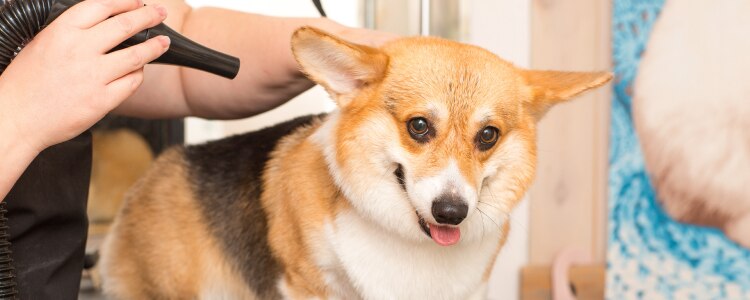

2025 Popular Pet Grooming Supplies Shopping Guide & Recommendation
As pets become part of the family, pet grooming is gaining importance. Regular grooming for cats and dogs not only keeps them looking tidy but also promotes their health. This article will introduce the latest pet grooming supplies and provide recommendations for various products, covering hair care, eye and ear cleaning, bathing, drying, and hair trimming. It aims to help pet owners choose the most suitable products based on their needs, allowing cats and dogs to enjoy grooming in a comfortable and safe environment.
Hair Care
During shedding season, cats and dogs are particularly prone to tangles. Pet owners should brush their pets daily to reduce hairball issues. Besides detangling, brushing promotes metabolism and enhances hair shine. If a pet owner finds tangles while brushing, it's a good opportunity to check the skin’s condition for health.
Due to the variety of breeds, hair types also differ. Owners should select brushes based on their pet’s hair texture to avoid damage. Long-haired cats should use wide-toothed combs and brushes, while short-haired cats are best suited for fine-toothed combs or rubber brushes. Long-haired dogs can use bristle brushes and dematting combs, whereas short-haired dogs benefit from bristle brushes, rubber brushes, or grooming gloves.
| Brush Type | Features |
Bristle Brush |
|
Dematting Comb |
|
Pin Comb |
|
Rake Comb |
|
Rubber Brush |
|
Shedding Comb |
|
Eye and Ear Cleaning
Both eyes and ears are sensitive areas, so pet owners should choose gentle cleansers to regularly clean their pets' eye discharge and ears to maintain hygiene.
1. Cleaning Eye Discharge
Owners should clean their pets' eye discharge daily and monitor for abnormalities to prevent eye diseases. If discharge suddenly increases or appears cloudy and yellow-green, a vet visit is necessary. For pets with excessive tearing, it may indicate dust or debris in their eyes, prompting owners to improve the pet's environment and clean the living space.
2. Cleaning Earwax
Owners should check their pets' ears daily and clean earwax as needed. This is especially important for breeds with floppy ears, as moisture can accumulate and lead to earwax buildup. Clean the ears every one to two weeks using a cotton ball wrapped around tweezers, dipped in ear cleaner, to gently wipe inside the ear. If black spots or unusual lumps are found, a vet visit is required.
Nail Trimming
Cats and dogs have different claw shapes, with cats having retractable claws and dogs having varying sizes. When choosing nail clippers, pet owners should select the type that suits their pet's paws to avoid injury.
Cats can use stainless steel straight clippers or those designed for small animals, while dogs can use guillotine-style or scissors-type clippers. Scissors-type clippers are common but may struggle with hard nails. For frequent trims, guillotine-style clippers may be more effective.
Long nails can curl and dig into the paw pads, causing discomfort and difficulty walking. Owners should check their pets' nails monthly and trim as necessary. To trim, gently press the paw pad to extend the claw and only clip the transparent tips to avoid cutting into the quick.
Bathing
Cats and dogs do not need frequent baths, as their coats effectively repel dirt. Pet owners typically bathe their pets every few weeks.
1. Shampoo
Owners should choose gentle, non-irritating shampoos to avoid skin irritation. Inappropriate shampoos containing preservatives, fluorescent agents, or dyes can lead to allergies, dandruff, and itching, increasing the risk of skin infections. When bathing, ensure the shampoo lathers well before applying it evenly, starting from the back and massaging gently, then rinse thoroughly with warm water to remove all residue.
2. Conditioner
Owners may also use conditioner to help moisturize their pets and replenish nutrients in their coats, repairing damaged hair.
Drying
After bathing, pet owners can use a grooming-specific blow dryer to dry their pets' fur. These dryers provide strong airflow at low noise levels and have temperature control features to quickly dry pets without the risk of burns.
Hair Trimming
Hair trimming is the final step in pet grooming, making cats and dogs look stylish and beautiful. There are many types of scissors available for trimming, including straight, curved, left-handed, and thinning shears. Scissors are mainly used for spot trimming, such as around the paws or rear.
For pets with fast-growing hair that require frequent trims, electric clippers can simplify the process. There are various types of electric clippers available, including those with steel, iron, or ceramic blades. Pet owners should choose clippers based on their pet's hair texture and hardness. Low-noise clippers can also help reduce pets' anxiety during grooming.

